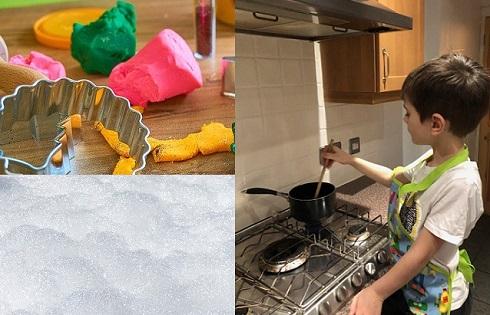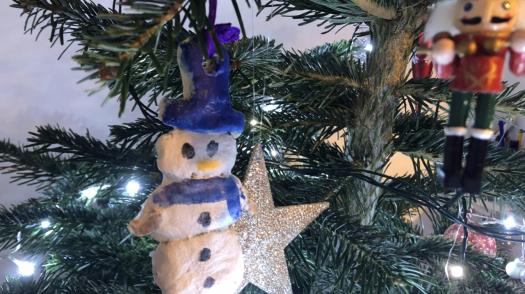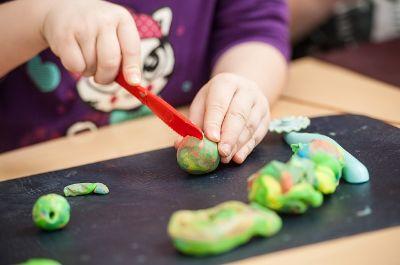
Published on: 15/02/21
Making, baking and creating has great benefits for children, especially after a brain injury. We look at some simple activities for the school holidays.

Published on: 15/02/21
Sensory activities can really benefit children, especially following a brain injury. They stimulate children's senses such as sight, sound, smell, taste or touch. And can help fine and gross motor skills, language development, problem solving, cognitive skills, as well as social interaction.
“These activities are a chance to have some fun and be creative,” said Keren Holding, Leisure & Activities Co-ordinator at The Children’s Trust. “With play dough, children can really hit it or throw it or squash it to work out the tension and frustration they may not even realise they feel. A bit like when we have a stress ball and squeeze it to help focus.”
Keren adds that for children that are highly sensitive, sensory activities such as the ones below are used to slowly re-introduce the senses of touch or smell to them without it being overwhelming. “They can expand on their imagination and just enjoy being children again. If children are having fun they sometimes don't even realise they are doing therapy. They let their guard down and relax and this helps them,” says Keren.
Here are four simple activities that you could try in the holidays:
There are many recipes on the internet that you can try. Soft cloud dough can be made with cornflour, hair conditioner and food colouring (this recipe is easy to follow) while for play dough you’ll need plain flour, salt, vegetable oil, water and food colouring (see this recipe). The cloud dough will not last as long as play dough, but both doughs can be put in a plastic sandwich bag in the fridge so that it lasts a little longer.
For bubble fun you’ll need a food mixer or a handheld mixer and a bowl. Put one-quarter of a cup of water and one-quarter of a cup of bubble mix (or a 50/50 mix of washing-up and water) into the container. Add a dash of food colouring and turn the mixer on and mix until the bubbles are foaming. You could then put the foam on a tray or in a bucket or bowl to play with. You could also make bubbles in a range of different colours!
There are so many benefits to making music – emotional and physical. A water glass xylophone is great fun – by filling glasses with different amounts of water you’ll create different notes that you child can tap gently with a chopstick or the end of spoon to hear the notes and start on a beat. It’s also nice for parents and children to have different notes and play in a small group.
For a rainmaker, you’ll need a kitchen roll tube, half a handful of rice or lentils, and some cardboard and tape to block up each end. Turn on the music and your child can shake the shaker (they can spend time decorating it too) or turn it upside down and back slowly for a gentler sound.
Complete your band by turning some empty metal cans or crisp tubes into drums. Put on some background music and you can start your music session!
Mixing and rolling pastry can be great fun and jam tarts are an easy recipe to follow. Fairy cakes can be fun too. To stop the bowl from wobbling you can place it on a wet tea-towel to help your child as they stir the cake mixture. For a range of easy-read recipes and great tips for cooking with a child following a brain injury you can order The Step-by-Step Cookbook.
Happy half term!

With the festive season fast approaching, we’re sharing 10 ideas for Christmas fun and trying something a little different.

Sensory play is any game or activity that stimulates any of the senses. It can encourage development of motor skills and coordination and can be a positive bonding opportunity.